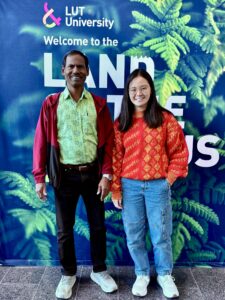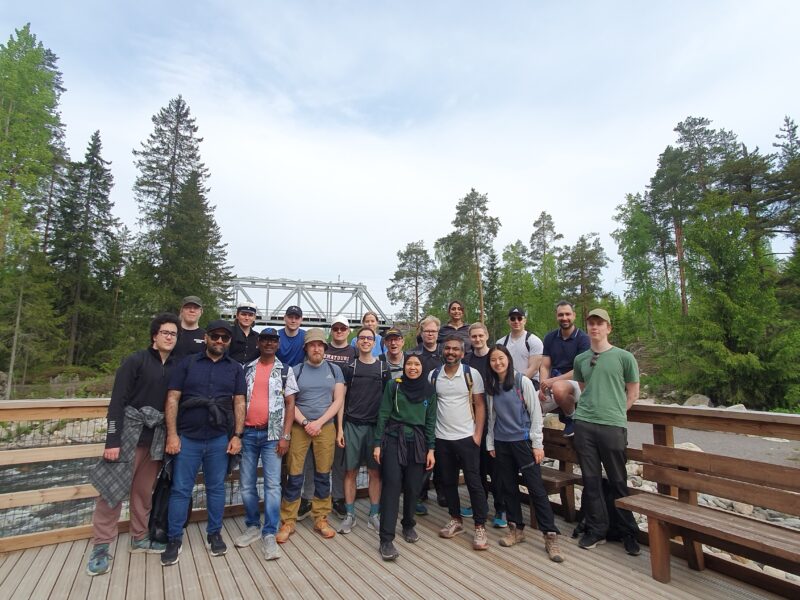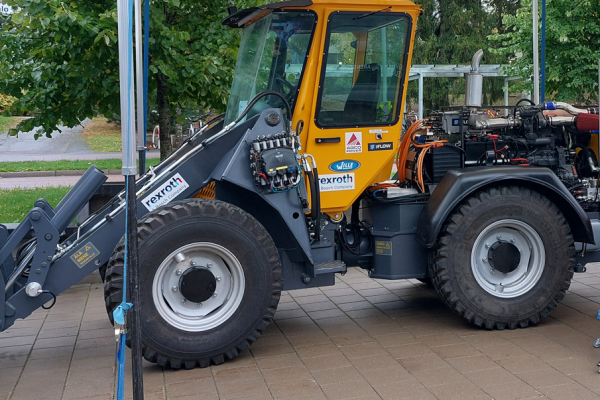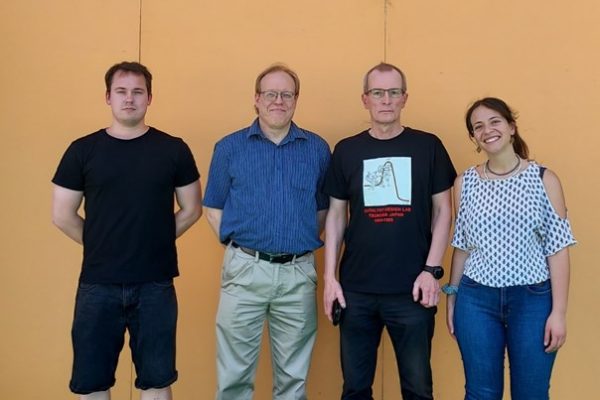At LUT University, a research exchange with Arizona State University enabled Helen Sun to build a hands-on setup for prismatic battery cells, start a model to track battery health, and help bring new lab equipment into use, delivering clear progress for Flex-CPT (WP5).
As part of the Flexible Clean Propulsion Technologies project (Flex-CPT), LUT University hosted Arizona State University visiting researcher Helen Sun to push battery thermal management forward within WP5. “The primary objective of my mobility was to advance research in battery thermal management,” she explains, framing a summer that connected hands-on experimentation with data driven modeling.
Building on prior work with cylindrical lithium-ion cells that used paraffin wax as a phase change material, Helen set out to translate passive cooling strategies to prismatic cells arranged in series and parallel. During the visit she established an experimental framework for these prismatic modules and, in parallel, developed a machine learning model in MATLAB to predict battery state of health from impedance data. Much of the effort went into making the laboratory platform robust. She designed and 3D printed enclosures and spacers, optimized conductor connections, and configured a new Biologic BCS-915 battery cycler and its software so that future tests could follow relevant NRMM drive cycles.
Professor Pertti Kauranen highlights the contribution to the project’s goals. “The mobility contributed to WP5 by developing new concepts for passive thermal management of Li ion batteries.” He notes that Helen produced a 3D printed module structure with prismatic cells suitable for thermal management studies with and without phase change materials. She also participated in the installation and testing of the new battery cycler that will serve laboratory scale battery module testing under different NRMM drive cycles.
Skills and capacity grew alongside the hardware. Helen deepened laboratory practice with prismatic cells, with a clear emphasis on safety protocols and maintaining a clean workspace. She became familiar with MATLAB’s machine learning functionalities and applied them to the state of health model. Knowledge transfer inside the group followed naturally as she trained another student to use the battery cycler, enabling testing of the new modules.
Summer timing occasionally complicated logistics, yet the team kept momentum. “Because my mobility period was during the summer, it was sometimes difficult to reach regional equipment support teams in a timely manner,” Helen notes. She used her US university affiliation to obtain support from US based teams and adapted to the time zone by working later hours when needed, while patient professors at LUT walked through experimental design and analysis step by step.
The work aligns with and extends the team’s broader research. According to Pertti Kauranen, earlier studies had demonstrated passive thermal management with cylindrical cells using constant current charge discharge cycling, and a further objective is to study how thermal management influences battery degradation under dynamic operation. The new prismatic module structure, the commissioned BCS-915 platform, and the MATLAB model together provide a foundation for those next steps.
Prof. Pertti noted that the exchange also strengthened institutional ties. The mobility formed part of a long term collaboration with Professor A. M. Kannan at Arizona State University. During the visit a double degree MSc programme between LUT and ASU was initiated, and the Electric Mobility Research Centre, a joint research unit between LUT and Kempower, informed Professor Kannan about Fulbright scholarship possibilities.

Helen Sun and Professor A. M. Kannan
Finland provided a memorable backdrop to the research. Helen Sun spent three months by Lake Saimaa, often spending evenings berry picking, making jam, foraging for chanterelles, kayaking, and taking sauna. “I enjoyed living in Finland for three months,” she says. “The student community at LUT is very welcoming and friendly, and I made a few lasting friendships during my mobility period.” She returned to the United States “feeling inspired and peaceful.”
In sum, the mobility advanced passive thermal management research for prismatic lithium ion cells with and without phase change materials, brought a Biologic BCS-915 online for NRMM relevant module testing, and launched a MATLAB based state of health model from impedance data, while building skills, training colleagues, and deepening collaboration between LUT University and Arizona State University.



